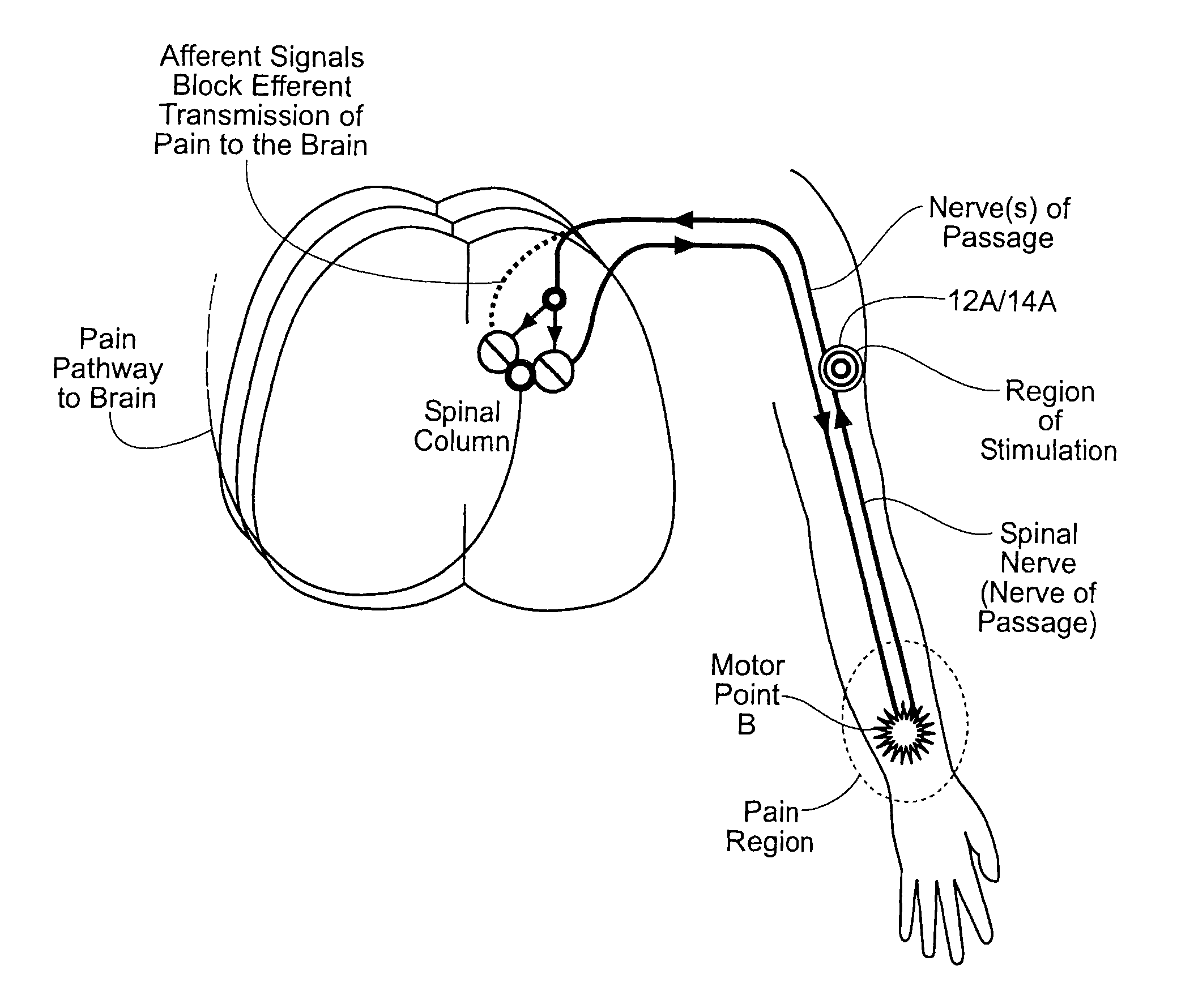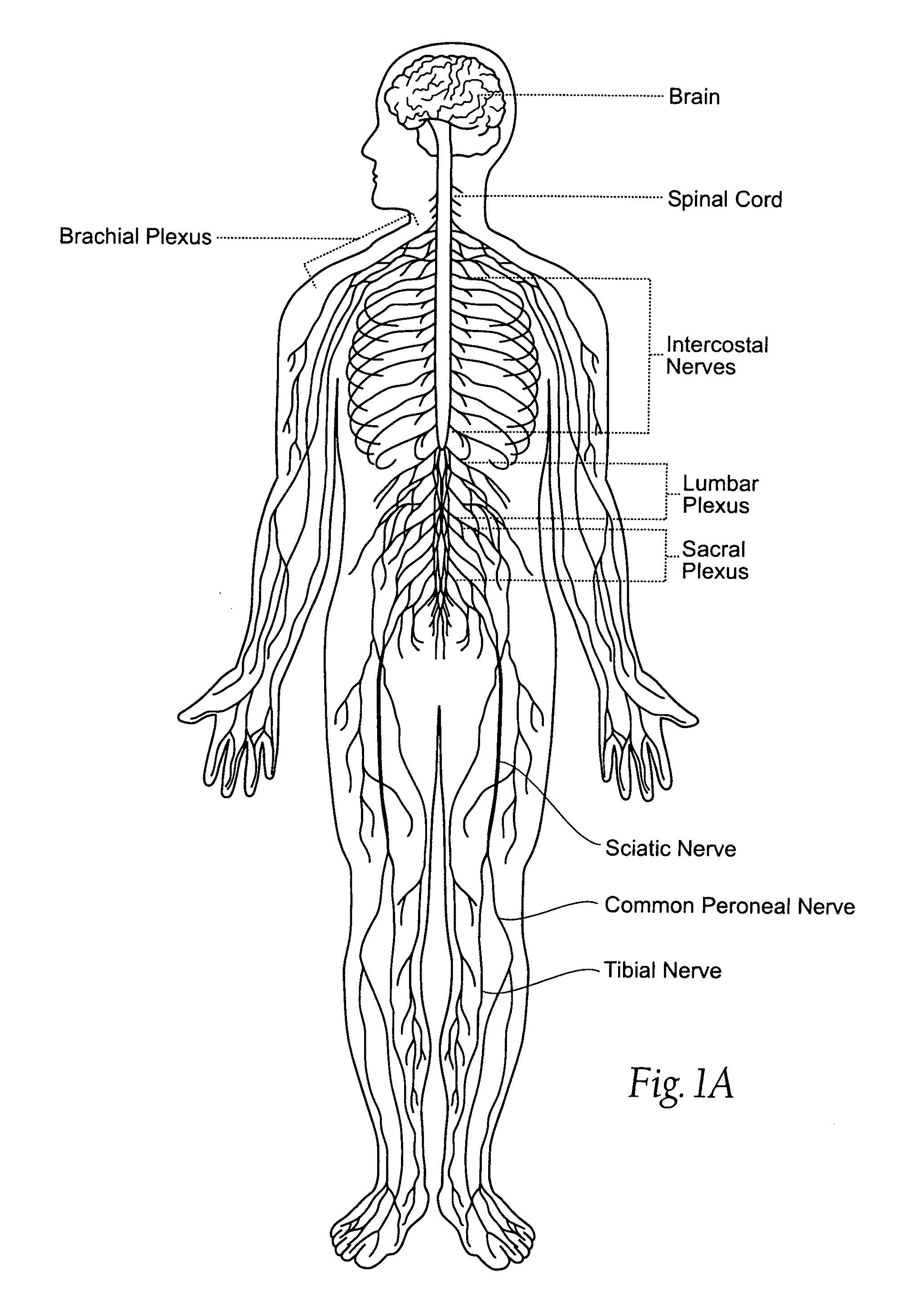Systems and methods to place one or more leads in tissue to electrically stimulate nerves of passage to treat pain
a technology of electrical stimulation and nerve stimulation, which is applied in the field of systems and methods for placing one or more leads in tissue to electrically stimulate muscle to treat pain, can solve the problems of insufficient improvement, many issues and the need for improvement, and many techniques developed, so as to shorten the distance between the lead and its connection. , the effect of pain treatmen
- Summary
- Abstract
- Description
- Claims
- Application Information
AI Technical Summary
Benefits of technology
Problems solved by technology
Method used
Image
Examples
Embodiment Construction
[0047]Although the disclosure hereof is detailed and exact to enable those skilled in the art to practice the invention, the physical embodiments herein disclosed merely exemplify the invention which may be embodied in, other specific structures. While the preferred embodiment has been described, the details may be changed without departing from the invention, which is defined by the claims.
[0048]Any elements described herein as singular can be pluralized (i.e., anything described as “one” can be more than one). Any species element of a genus element can have the characteristics or elements of any other species element of that genus. The described configurations, elements or complete assemblies and methods and their elements for carrying out the invention, and variations of aspects of the invention can be combined and modified with, each other in any combination.
I. The peripheral nervous system
[0049](Anatomic Overview)
[0050]As generally shown in FIGS. 1A and 1B, the peripheral nervo...
PUM
 Login to View More
Login to View More Abstract
Description
Claims
Application Information
 Login to View More
Login to View More - R&D
- Intellectual Property
- Life Sciences
- Materials
- Tech Scout
- Unparalleled Data Quality
- Higher Quality Content
- 60% Fewer Hallucinations
Browse by: Latest US Patents, China's latest patents, Technical Efficacy Thesaurus, Application Domain, Technology Topic, Popular Technical Reports.
© 2025 PatSnap. All rights reserved.Legal|Privacy policy|Modern Slavery Act Transparency Statement|Sitemap|About US| Contact US: help@patsnap.com



